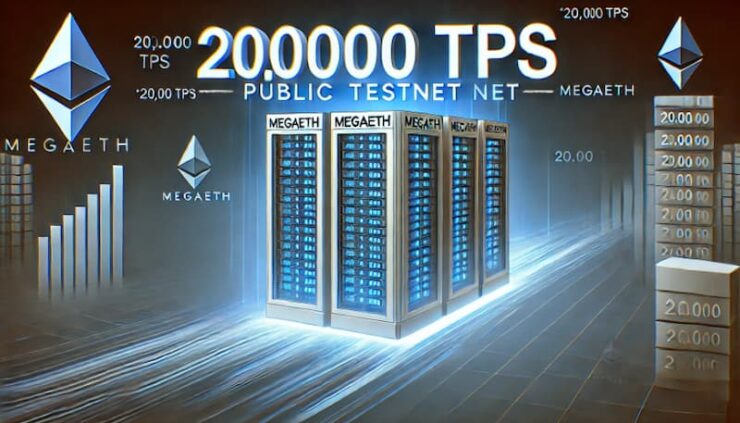In a dramatic debut that’s turning heads across the crypto space, MegaETH has officially launched its public testnet and wasted no time flexing its muscle. Surpassing 20,000 transactions per second (TPS) within the first day, the project is positioning itself as a serious contender in the race to scale Ethereum beyond its current limits.
With 10 millisecond block times, Megadeth is now signaling a potential shift away from Ethereum’s rollup-centric roadmap, raising new questions about what true scalability could look like.
While most of Ethereum’s scaling efforts focus on Layer-2 rollups, MegaETH is betting on a different model, one that aims to consolidate throughput into a single, high-performance execution layer.

Similar to Optimistic and ZK rollups, MegaETH offloads execution from Ethereum’s base layer while maintaining security ties. But it breaks new ground in its use of EigenDA’s data availability and specialized sequencers that enable parallel transaction processing, unlocking speeds rarely seen in the Ethereum ecosystem.
The long-term ambition? 100,000 TPS and sub-millisecond latency performance metrics typically reserved for centralized systems.
How Does MegaETH Stack Up Against the Competition?
For context, Solana boasts a theoretical TPS of 65,000 but averages closer to 1,500 TPS in real-world conditions. MegaETH’s 20,000 TPS on launch — even in testnet — puts it squarely in the race for dominance in high-demand sectors like DeFi, gaming, and real-time dApps.
If MegaETH sustains these numbers on mainnet, it could disrupt the existing landscape where fragmented Layer-2 rollups compete for liquidity and users — an outcome Ethereum’s core developers have long anticipated but not yet solved.
The project isn’t just fast, it’s well-funded and backed by some of Ethereum’s most respected names. In mid-2024, MegaETH secured $20 million in seed funding at a nine-figure valuation, drawing support from Vitalik Buterin, Joseph Lubin, and other major players.
Crowdfunding efforts added another $10 million via Echo and $13 million in ETH through NFT sales, reflecting strong market confidence in the project’s vision.
Already, trading platforms GTE and Infinex are live on the testnet, early signs that MegaETH could attract real-world adoption quickly.
What’s at Stake? A New Phase in Ethereum’s Scaling Race
MegaETH’s entry sharpens the debate about Ethereum’s future. Should scaling rely on multiple rollups fragmenting liquidity and UX? Or is there room for a singular high-performance execution layer capable of handling everything?
The answer could reshape how DeFi, NFTs, and gaming evolve on Ethereum. With demand for high-throughput, low-latency dApps growing, MegaETH is betting the market wants speed and is ready to pay for it.
The Takeaway
MegaETH’s explosive testnet launch challenges the status quo in Ethereum scaling. Delivering 20,000 TPS on day one sets a new bar that other projects must now chase.
Whether MegaETH becomes the definitive scaling solution remains to be seen. But one thing is clear: Ethereum’s scaling wars are entering a new, high-stakes phase, in which only the fastest and most efficient protocols will survive.





